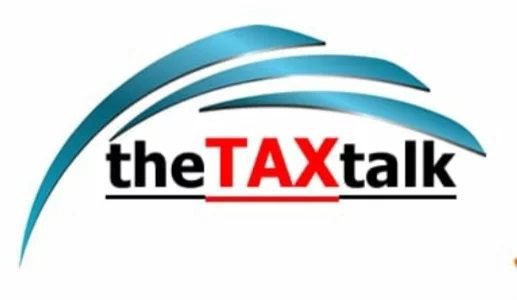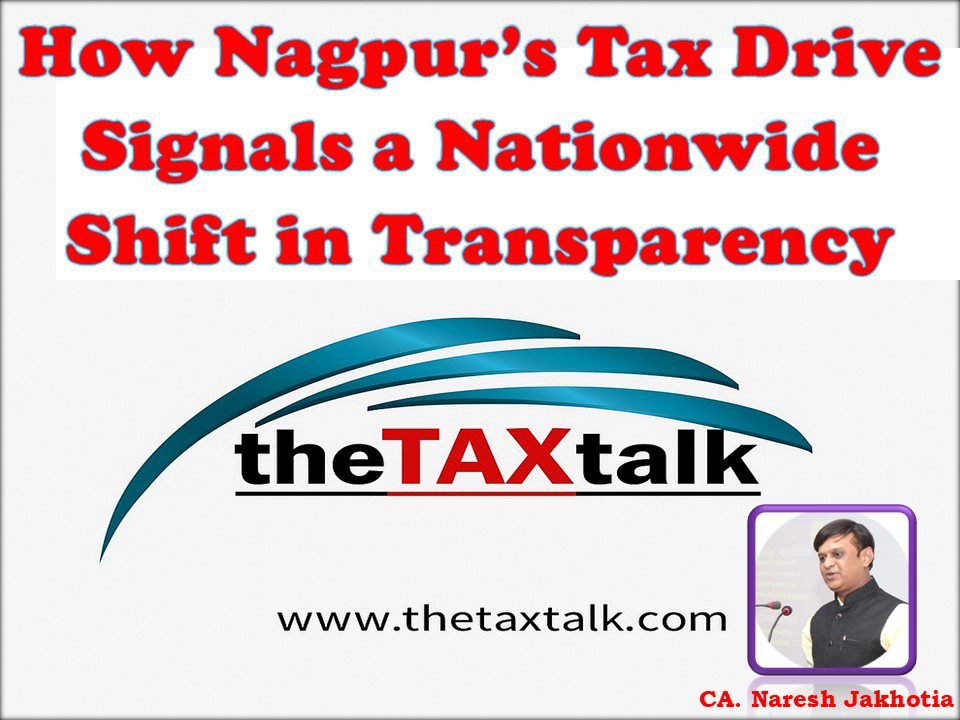![]()
How Nagpur’s Tax Drive Signals a Nationwide Shift in Transparency
Ever watched one of those crime thrillers where the thief thinks he’s committed the perfect heist-no witnesses, no fingerprints, no CCTV footage-only for the detective to walk in, smile, and say, “You forgot one thing”? Welcome to Nagpur, where that detective isn’t a movie hero – it’s the Income Tax Department’s I&CI & Investigation wings who have quietly rewritten the rulebook – from real estate to co-op banks, hospital billing to fake ITR claims – proving that every money trail leaves a trace
The Anatomy of the ‘Perfect’ Planning – That Failed Miserably:
The developments marked one of the most systematic data-based reviews of unreported transactions – and the beginning of a model now being adopted across the country.
1. The Land Records Labyrinth – Where ₹20K Crore Went Missing:
At multiple Sub-Registrar Offices (SROs) in Nagpur – the I&CI team discovered enormous under-reporting in property deals. In some offices, transactions worth hundreds of crores were found manually filtered out of the i-Sarita registration portal before the data was transmitted to the central reporting system. Later checks revealed entire batches of high-value sales missing from official statements. This wasn’t a software glitch; it was deliberate omission – and for the first time, it was traced through data comparison rather than an upfront raid or survey.
2. The Cooperative Bank Conundrum – ₹1,500 Crore of Hidden Money:
The next stop: cooperative banks. Investigators reportedly detected ₹1,500 crore of unreported deposits and withdrawals across about 22,000 accounts in just three banks. Hundreds of these involved transactions exceeding ₹50 lakh; thousands earned interest above ₹2 lakh annually but were absent from official reports. The banks had, effectively, created a shadow ledger that bypassed the Department’s information pipeline.
3. The Healthcare Hiccup – Doctors may soon see Taxman:
In another bold move, the spotlight turned to the healthcare sector. Around 130 hospitals across Vidarbha are under the scanner for accepting large cash payments above ₹2 lakh per patient without proper disclosure. Many payments were split into smaller bills – a digital version of ‘cutting the bill, not the tax.
4. The Benami Asset Trail – ₹452 Crore of Invisible Wealth:
The team also unearthed benami properties and deposits worth about ₹452 crore, held in the names of daily-wage workers and small farmers who had never handled such sums. It underlined how easily identities can be misused – and how effectively technology can now expose that misuse.
5. The Bogus Refund Racket – When Fake Deductions Turned Costly:
While the earlier cases involved unreported income, the Nagpur investigation also uncovered another troubling pattern – bogus refund claims. Several salaried taxpayers had claimed fake deductions, often on the advice of local ‘return filers’. The investigation wing by matching refund claims with employer data and donation recipients found that what looked like ‘smart saving’ was actually a costly mistake in disguise. The result: refunds running into crores were credited on paper claims that had no real basis.
When “No Reflection in AIS/TIS” Doesn’t Mean “No Detection”:
For years, taxpayers comforted themselves with a familiar thought: “If it doesn’t appear in my AIS or TIS, the Department doesn’t know.” The Nagpur experience proved otherwise. When banks, hospitals, or registrars fail to report accurately, the Department goes straight to the source. Instead of waiting for information to arrive through the system, officers now pull data directly from property databases, cooperative-bank ledgers, or billing software – and reconcile it with the Statement of Financial Transactions (SFT) files
What Exactly Is SFT?
Under the Income-tax Act, certain entities – such as banks, registrars, mutual funds, and insurers – must file an SFT reporting specified high-value activities. These SFTs then get reflected in the taxpayer’s Annual Information Statement (AIS). When a taxpayer omits or manipulates details in their ITR, the mismatch becomes the Department’s first lead. In short, the SFT is the tax system’s radar – and Nagpur’s operation showed what happens when that radar is cross-checked manually. As one senior officer reportedly remarked, “We no longer chase numbers. We chase the missing lines between the numbers.” The statement captures the new mind-set: data intelligence first, detection later.
Five Lessons for taxpayers from the Great Nagpur Tax Hunt:
1. The Myth of the Perfect Cover-up:
Cash deals or skipped entries are no longer invisible. With PAN linkage, triangulated databases, and AI-based analytics, even deleted data leaves digital fingerprints.
2. Fire Leaves Smoke – and Someone Is Watching:
When thousands of crores in property and banking transactions can resurface, “unreported” has become a temporary status, not a permanent escape.
3. AIS/TIS Silence Is Not Bliss:
If your transaction isn’t visible today, it may appear tomorrow. The Department’s reach extends to the source of data, not just the reports it receives.
4. Technology Is the New Detective:
The Nagpur initiative showed how digital audits and ground-level intelligence now move hand in hand. This is the shape of modern tax Governance.
5. Honest Taxpayers Can Relax – Others Should Reflect:
Those maintaining proper books have little to fear. Those relying on loopholes should remember – in today’s tax system, dots connect faster than ever.
A Broader Trend beyond Nagpur:
The taxman’s microscope is sharper than ever – and this time, it’s focusing not on fear, but on fairness. What began here is now being copied across India. The State Government is studying similar systems to improve transparency. Inter-departmental data sharing is fast becoming the cornerstone of governance. Whether it’s Income Tax, GST, or other departments, the age of isolated data is ending. This shift is not about fear; it’s about fairness. When some conceal, others contribute more. Each recovered rupee strengthens public trust and lightens the honest taxpayer’s load. The Department’s data-driven model reflects a maturing system — one that rewards transparency instead of tolerating opacity. Lower tax rates are now strongly backed by higher accountability
Nagpur’s experience is not an isolated enforcement story; it’s the opening chapter of a nationwide transition towards transparency. Whether you approve or criticize the method, the direction is clear: the tax system is moving from paperwork to precision. The focus is shifting from raids to reconciliation, from suspicion to substantiation. For taxpayers, this moment offers both reassurance and reflection. Reassurance, because clean records mean peace of mind. Reflection, because omissions that once seemed invisible may no longer remain so. And this story isn’t over yet.
In next week’s column, we’ll explore what taxpayers should do now — how to review one’s own AIS/TIS, the difference between a revised and an updated return, and how voluntary correction today can prevent unwanted consequences tomorrow. The chase for transparency has begun – the choice to stay ahead of it lies with each of us.
[Views expressed are the personal view of the author. Readers are advised to seek professional advice before taking any decisions. Readers may forward their feedback & queries at nareshjakhotia@gmail.com. Other articles & response to queries are available at www.theTAXtalk.com]


